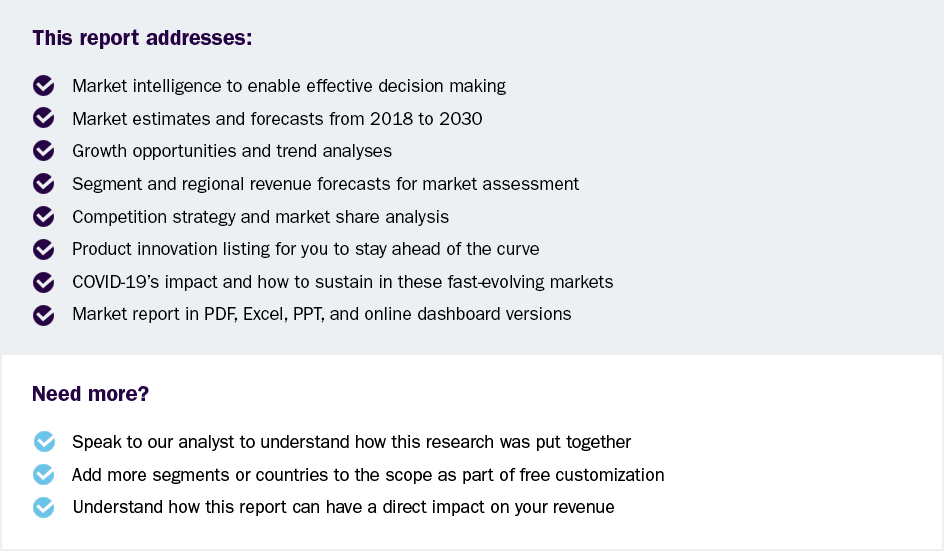Food Acidulants Market Size To Reach $8.74 Billion By 2030
Food Acidulants Market Growth & Trends
The global food acidulants market size is expected to reach USD 8.74 billion by 2030, expanding at a CAGR of 5.3% from 2024 to 2030, according to a new report by Grand View Research, Inc. The product demand is expected to increase due to several factors, including increasing consumer preferences for processed foods & beverages, the rapidly growing food & beverage industry, and rising awareness of the functional benefits of acidulants in enhancing flavor, extending shelf life, and providing cost-effective solutions in various food products. According to Northeastern University's Network Science Institute, around 73% of the food supply in the U.S. is ultra-processed, indicating the considerable usage of processed foods in modern diets. This trend is driven by the low cost and convenience that processed foods offer, leading to a higher demand among consumers.
Acidulants, such as adipic, citric, phosphoric, lactic, acetic, fumaric, malic, and tartaric acids, are commonly used in processed foods and beverages as additives. They serve various purposes, including leavening functions in baked goods, controlling gel formation, and maintaining viscosity in confections and gelatin desserts. This rise in the consumption of processed foods is driving the market growth. The rapidly expanding beverage industry, particularly the ready-to-drink (RTD) market, is expected to drive product demand. With experts projecting a continued 20% annual growth, reaching USD 146 billion in sales by 2030, the industry's focus on natural, less sugary beverages and innovative products like hard seltzers, CBD-infused beverages, and low-to-no-alcohol beers will boost the use of acidulants.
Premiumization trends, where consumers are willing to pay more for high-quality beverages, also contribute to product demand, which is crucial in enhancing flavors and maintaining product stability in a wide range of beverages. Acetic acid, known for its sour taste and pungent smell, is a key component in vinegar and is widely used in food production due to its ability to lower pH levels, act as a natural preservative, and regulate acidity. Its versatility extends to being a leavening agent in baking, where it reacts with alkaline ingredients to create gas for increased rise in baked goods. This widespread use in various food products like mayonnaise, ketchup, and pickled vegetables contributes significantly to the growth of the food acidulants sector, as it is an essential ingredient in many processed foods.
The growing trend of veganism is driving the demand for food acidulants. According to SPINS, a data technology company, bread and baked goods labeled vegan are growing in demand at 5.8%, indicating a rising consumer preference for vegan options. Acidulants like citric acid, malic acid, acetic acid, ascorbic acid, lactic acid, and sodium lactate are commonly used in baked products to enhance flavor, improve texture, and extend shelf life. As vegan bakery products, such as coffee cakes, cupcakes, muffins, and pound cakes, continue to gain popularity with growth rates as high as 46.5%, the product demand to meet these production needs is expected to rise correspondingly.
 Request a free sample copy or view report summary: Food Acidulants Market Report
Request a free sample copy or view report summary: Food Acidulants Market Report
Food Acidulants Market Report Highlights
-
Citric acid held a major revenue share of the market in 2023. This is the most used acidulant due to its natural occurrence in citrus fruits and large-scale manufacturing through fermentation. Its sharp, tart taste provides a refreshing flavor that balances sweetness in beverages. In addition, its versatility in enhancing flavors and acting as a preservative makes it a popular choice across a wide range of food and beverage products
-
The demand for food acidulants in the dairy & frozen desserts sector is set to grow at the fastest CAGR from 2024 to 20330. This is due to their flavor-enhancing and preservative properties. Acidulants like lactic and tartaric acids can improve the taste of dairy products and help set desserts, making them essential ingredients in a wide range of products from yogurts to ice cream
-
Asia Pacific held a dominant share in the global market in 2023 due to its large population and rising disposable income levels, which drive increased consumption of processed foods and beverages that use acidulants for flavor enhancement and preservation
Food Acidulants Market Segmentation
Grand View Research has segmented the global food acidulants market based on type, application, and region:
Food Acidulants Type Outlook (Revenue, USD Billion, 2018 - 2030)
-
Citric Acid
-
Acetic Acid
-
Lactic Acid
-
Phosphoric Acid
-
Malic Acid
-
Others
Food Acidulants Application Outlook (Revenue, USD Billion, 2018 - 2030)
-
Bakery & Confectionery
-
Beverages
-
Dairy & Frozen Desserts
-
Meat Industry
-
Others
Food Acidulants Regional Outlook (Revenue, USD Billion, 2018 - 2030)
-
North America
-
U.S.
-
Canada
-
Mexico
-
-
Europe
-
Germany
-
UK
-
Spain
-
Italy
-
France
-
-
Asia Pacific
-
China
-
India
-
Japan
-
Australia
-
South Korea
-
-
Central & South America
- Brazil
-
Middle East & Africa
-
South Africa
-
List of Key Players of Food Acidulants Market
-
Tate & Lyle
-
Brenntag North America, Inc.
-
Univar Solutions LLC
-
ADM
-
Jungbunzlauer Suisse AG
-
Cargill, Incorporated
-
Hawkins Watts Limited
-
Corbion
-
Bartek Ingredients Inc.
-
FBC Industries

